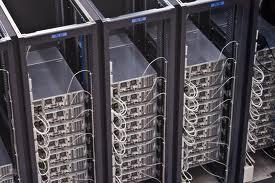

Step 1: Evaluate Your Current Technology
The first, and most important, step is to evaluate your current technology and its usage to identify any shortcomings in both efficiency and reliability. This process starts with surveying your employees. They are the ones that interact with the systems on a daily basis and are the foundation for your business. Many times what we see is an employee will report an issue no more than 3 times before they just accept the situation and work around the problem. This can equate to dollars on the bottom line if it’s causing them extra work time. Not all employees have the same level of awareness as you do about the overall impact so it’s important that you ask the right questions to draw these inefficiencies out. The second aspect to evaluation is interviewing your management staff to key in on areas for improvement in overall process and workflows. The new system should be designed to IMPROVE your systems, not just maintain the status quo.
Step 2: Compare Options
Should you refresh the current server and network and continue operating the way you are? Should you consider hosted (cloud) applications or servers that could improve reliability and availability to remote workers? What type hardware should you install? Does brand matter? There are literally hundreds of different combinations of technology and implementations that can be used in any one environment. This means that as you progress through step 1 above, you need to then begin comparing your options. Having resources involved that understand your business process, your current technology, and your future business needs is paramount in the success of this stage. It’s also important to regularly bring in multiple team members throughout the planning process to gain insight into each department’s challenges and ensure they are accounted for in the new implementation. Having someone at your disposal with knowledge about the different options is one thing, but the intimate business knowledge is critical and many times determines the success or failure of an upgrade.
Step 3: Decide and Commit
Once you have evaluated your current system and compared the available options, it’s time to commit. This should be the easy part if you have done your homework and due diligence. You already know how your staff uses your technology, the challenges they face, and the solutions to the problems. You also now extensively explored your options and have decided on which is the best for your business structurally and financially. The commitment phase comes down to the financial decision and negotiation to ensure the hardware and software you are investing in is provided at the best possible cost. Having a relationship with an IT partner that has the knowledge and connections with the right distributors can save thousands in this phase.
In the end, the success of your upgrade project will be determined not in the implementation but in the planning. Not all projects are created equal and whether you have 20 users or 200, your project deserves your attention and planning involvement to ensure its success.